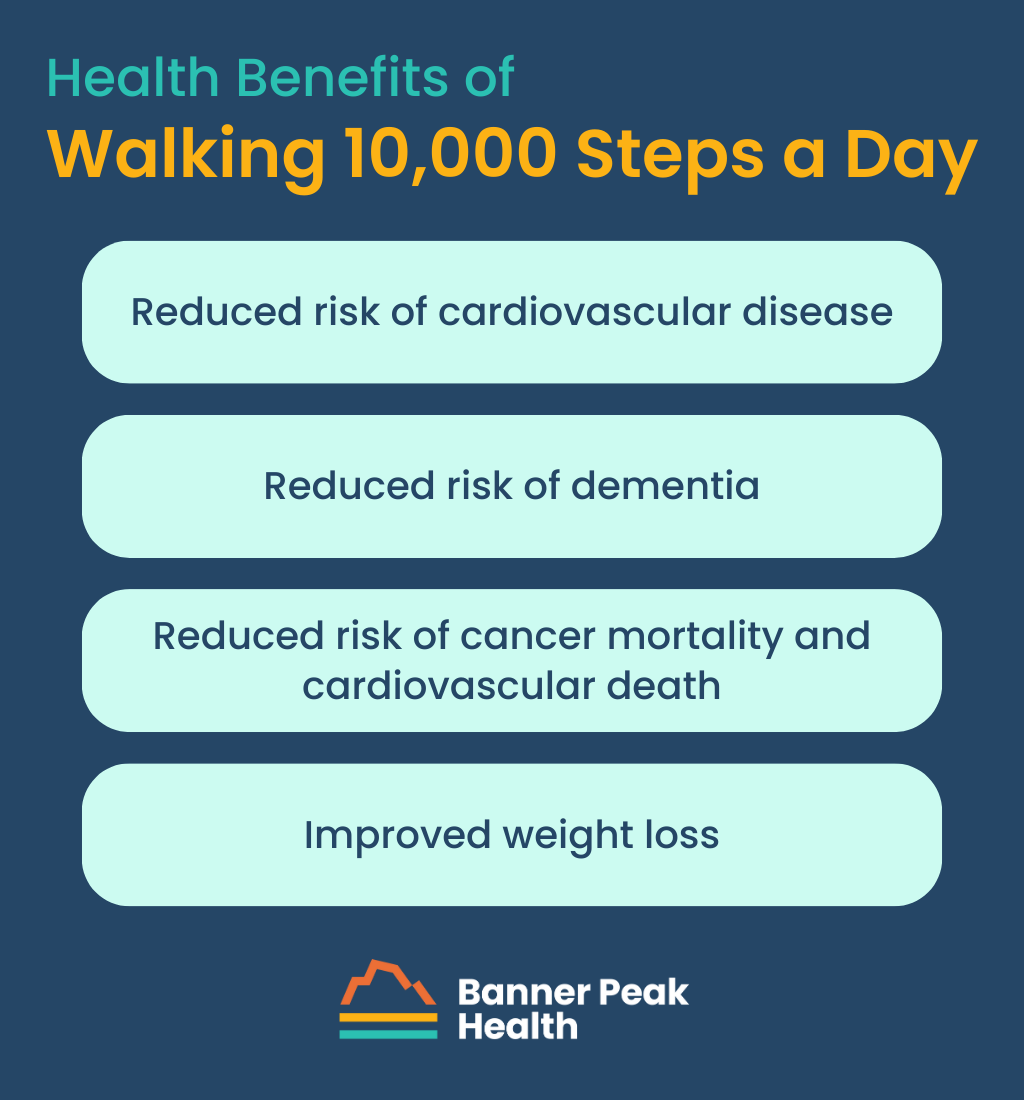The other evening, my wife and I were out walking our two dogs.
After a long day, I was ready to head in. My wife pulled out her phone and realized she hadn’t reached her daily goal of 10,000 steps. She asked if I could walk a few more blocks with her.
Although I was tired, I wanted to go with her. I knew it was good for my health, her health, and even the dogs’ health. But I was also curious about my wife’s fixation on the goal of 10,000 steps.
What are the health benefits of walking 10,000 steps a day? I decided to look into it.
Where Does the Idea of ‘10,000 Steps a Day’ Come From?
In 1965, a Japanese company called Yamasa Clock developed a new pedometer. They named it “Manpo-Kei,” which translates to “10,000 steps.”
Why? Because the Japanese character for the number 10,000 resembles a person walking.

That’s it. The name had nothing to do with medical science at all! Instead, it was a marketing decision that, over half a century later, is enshrined in a sort of folklore.
But the story doesn’t end there.
The Health Benefits of Walking 10,000 Steps a Day
We’re aware of the many benefits of aerobic exercise, from weight loss to mood elevation to a reduced risk of dementia.
Robust literature has assessed the dose-response curve for exercise — or, how much exercise yields optimal results.
According to a study published in 2019, which monitored 18,000 women over four years, 4,400 steps a day yields better results than 2,700 steps per day. And 7,500 steps per day is better still.
Another study published in 2020 looked at about 5,000 men and women over 10 years. Researchers found that by increasing steps per day from 4,000 to 8,000, subjects could reduce their risk of cardiovascular disease by 50%.
All these studies look for an association between walking and improved health outcomes. However, there’s the obvious confounder here: The more frail or sick you are, the less you walk. So there’s an unavoidable inaccuracy in these studies based on that confounding factor. Nonetheless, they’re being used to encourage people to walk more.
In 2022, results from the largest cohort study to date were released. In Britain, over 78,000 individuals with a mean age of 61 were followed for seven years. The study found that at 3,800 steps per day, dementia risk reduced by 25%, while at 9,800 steps per day, that risk reduced by up to 50%.
Another study looked at the same patient population for overall risk reduction in cancer mortality and cardiovascular death. Researchers found that the maximum benefit occurred at — get this — 10,000 steps per day.
The story has come full circle. After nearly 60 years, what began as a marketing gimmick has proven to be a healthy practice.
Today’s Takeaways
If exercise were a pill, it would be the safest, most powerful drug ever. Literature supports the notion that there are significant health benefits to walking 10,000 steps a day.
Don’t you hate it when your spouse is right?
Everyone knows exercise is good for you on an intellectual level. The challenge we face is helping people develop habits that encourage them to incorporate this behavior into their daily routine.
It’s helpful to find ways to exercise that are fun, or at the very least, less onerous. For example, walking with friends, family members, or furry family members may be enjoyable for you. And if tracking and counting steps helps motivate you to walk farther every day, go for it!


Barry Rotman, MD
For over 30 years in medicine, Dr. Rotman has dedicated himself to excellence. With patients’ health as his top priority, he opened his own concierge medical practice in 2007 to practice medicine in a way that lets him truly serve their best interests.




